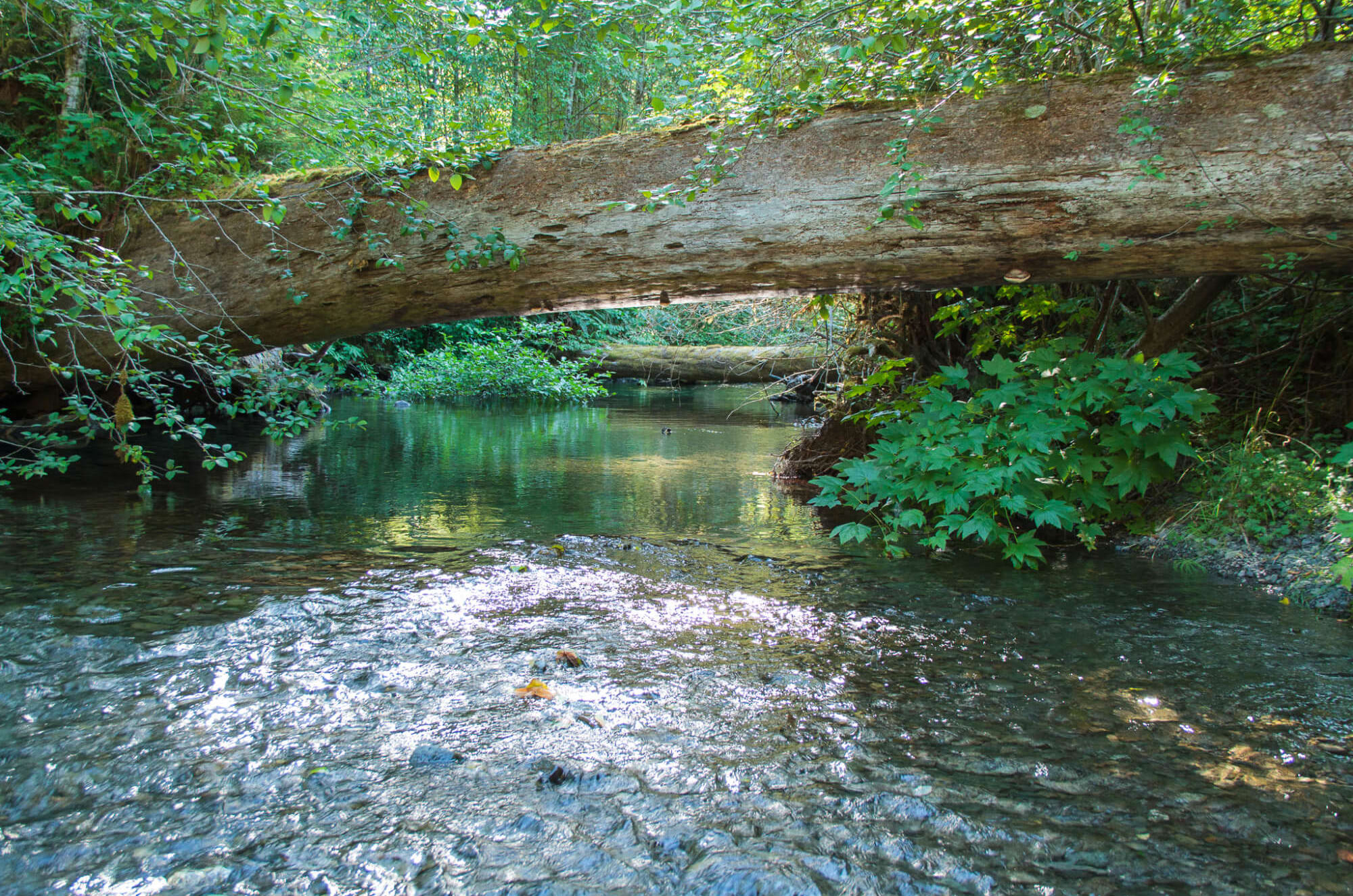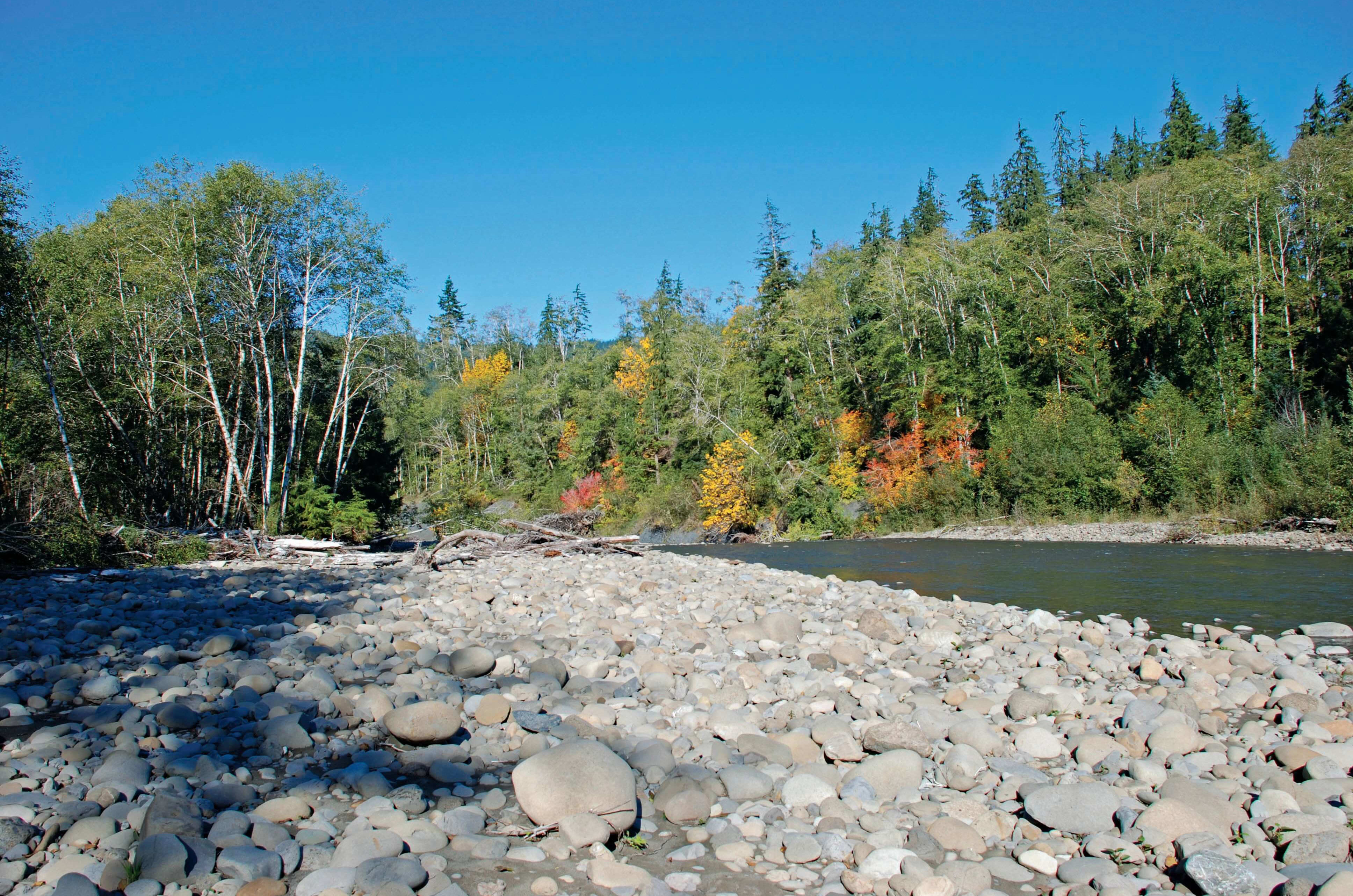The Hoh River is one of the nation's great rivers, world-renowned for its towering rainforests, abundant rainfall and its breathtaking scenery. The Hoh also brings an unprecedented opportunity to protect and maintain one of the most important strongholds for wild salmon and steelhead in the Lower 48. With pristine headwaters, an absence of dams and no significant hatchery influence, the Hoh’s greatest need is enduring habitat protection along the lower river system.
Western Rivers Conservancy accomplished this when it placed, piece by piece, nearly the entire length of the lower Hoh into protective status by acquiring the majority of lands along the lower River. Together with our partners—the Hoh River Trust, Washington Department of Natural Resources and U.S. Fish and Wildlife Service, and with the support of Congressman Norm Dicks, Senators Patty Murray and Maria Cantwell, and Washington Commissioner of Public Lands Doug Southerland—WRC created a Recreation and Conservation Area between Olympic National Park and the Pacific Ocean. Along with the upper river, which is protected within Olympic National Park, the Hoh now serves as a sanctuary for its renowned runs of salmon and steelhead. Today, outdoor enthusiasts have a wealth of increased recreational opportunities and access along the Hoh. In addition, many species of wildlife will benefit from large-scale habitat protection, including listed species like the marbled murrelet, northern spotted owl, and bull trout.
Beginning 2001, WRC acquired and protected all of the major corporate-owned land along the lower 30 miles of the Hoh River, totaling nearly 7,000 acres. In September 2009, we conveyed the last 2,000 acres of these lands to the Hoh River Trust (HRT), a private, nonprofit organization founded by WRC and the Wild Salmon Center in 2004. We created HRT to act as owner and steward of the Hoh River Recreation and Conservation Area for the benefit of fish, wildlife and people.
During its role as steward, HRT reopened every blocked fish-bearing stream under its control, largely by replacing impassible culverts with bridges that allow for miles of fish passage. Coho and steelhead returned to streams and spawned in tributaries that had not had salmon or in them since the 1940s. HRT decommissioned over 10 miles of logging roads and thinned 3,500 acres of former timberland, where tree density was inhibiting the return to old-growth habitat conditions. It also opened small meadows to create forage habitat for elk and edge-dependent species.
In 2017, HRT expanded the Hoh River Recreation and Conservation Area to 10,315 acres by combining HRT lands with The Nature Conservancy (TNC)‘s 3,182 acres of land within the Hoh River basin. The new additions to the Hoh River Recreation and Conservation Area are mostly along crucial salmon and steelhead-bearing tributaries. The enlarged conservation area is now owned and managed by TNC in partnership with HRT. The land transfer from HRT to TNC will allow TNC to implement additional large scale restoration projects and partner with the local communities, tribes and state agencies to work for abundant salmon and a strong local economy—all while keeping the lower river open to all and free to access.
- WRC purchased its first Hoh Valley lands in 2001, acquiring the Schmidt Bar property from Rayonier. This 757-acre property includes gravel bars important for mainstem spawning by Chinook salmon along with the lower portions of two key tributaries: Elk and Winfield Creeks. Schmidt Bar's old-growth stands provide good nesting habitat for marbled murrelets and spotted owls. Schmidt bar also has a lovely loop trail that is frequented by many local hikers.
- The second purchase from Rayonier, the 1,362-acre Spruce Creek Bottom property, contains the lower portions of five key tributary streams, nearly four miles of river frontage, one of the largest concentrations of known marbled murrelet habitat on private land in the Hoh Valley and some of the most popular river access sites.
- WRC acquired the final group of Rayonier properties in December 2004, including the 1,000-acre Hoh Oxbows property and a 90-acre parcel at the confluence with the South Fork Hoh. The South Fork confluence contains a broad swath of critical floodplain forest. The oxbow property includes the lower portion of an important tributary streams,: Anderson and Nolan creeks.
- In March 2009, WRC purchased nearly 2,000 acres from Fruit Growers Supply Company, marking the complete disposition of corporate-owned lands along the main-stem Hoh River.
- In June 2017, HRT and WRC expanded the Hoh River Recreation and Conservation Area to 10,315 acres in a partnership with TNC, the new stewards of the conservation area.
The Hoh River Recreation and Conservation Area now complements the Hoh's pristine headwaters within the National Park, creating fifty-six-miles of protected habitats and recreation opportunities from the interior of the Olympic Mountains to the Pacific Ocean, where the mouth of the Hoh is protected within the National Park.
Critical support for our work on the Hoh River was provided by the Paul G. Allen Forest Protection Foundation, Bullitt Foundation, Carolyn Foundation, Edwards Mother Earth Foundation, H. and J. Ferguson Foundation, Horizons Foundation, Charlotte Martin Foundation, Mead Foundation, National Fish and Wildlife Foundation, Northwest Fund for the Environment, David and Lucile Packard Foundation, Russell Family Foundation, Smith/Welsh Foundation, Wildlife Forever (MN) and Wild Salmon Center.















